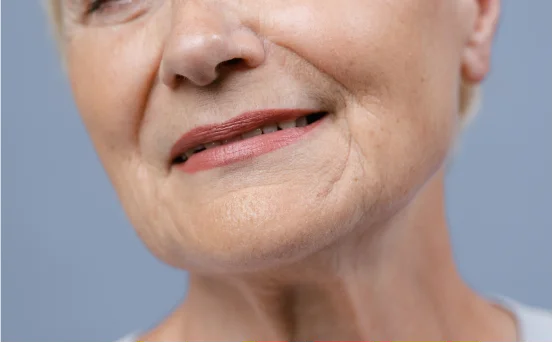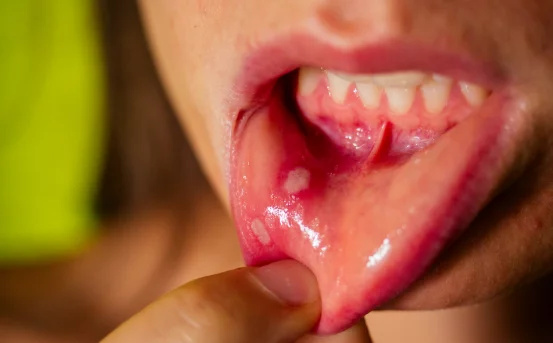Causes of chin augmentation surgery, also known as genioplasty or mentoplasty, has become increasingly popular in recent years. This cosmetic procedure enhances the shape, size, and projection of the chin to improve facial harmony and boost self-confidence. Whether performed using implants or through bone reshaping, chin augmentation can deliver transformative results. But what drives people to seek this surgery?
The chin plays a critical role in determining the aesthetic balance of the face. A well-proportioned chin can enhance the profile, strengthen the jawline, and create a more symmetrical and youthful look. However, not everyone is born with a naturally prominent chin, and some people experience changes in chin structure due to aging, trauma, or medical conditions. These variations can lead to dissatisfaction with one’s appearance and even impact psychological well-being.
What is Chin Augmentation Surgery?
Chin augmentation is a surgical procedure designed to alter the contour of the chin. It may involve the placement of a silicone implant, fat grafting, or the repositioning of the jawbone (sliding genioplasty). The primary goal is to enhance the chin’s prominence and alignment relative to other facial features such as the nose, lips, and jawline.
The surgery is typically performed by a plastic surgeon or maxillofacial specialist and may be done under local or general anesthesia, depending on the complexity of the case.
Top Causes of Chin Augmentation Surgery
People opt for chin augmentation for a variety of reasons, which can generally be grouped into cosmetic, functional, and psychological categories. Below are the most common causes:
To Improve Facial Harmony and Balance
One of the leading cosmetic motivations behind chin augmentation is the desire for a more balanced facial profile. The chin plays a vital role in defining the proportions of the face. When the chin is too small or recessed, it can make other features especially the nose appear disproportionately large.
A weak chin may disrupt the natural symmetry of the face, which is often associated with beauty and attractiveness. By augmenting the chin, patients can achieve a more harmonious balance between the chin, jawline, and nose.
Correcting a Receding or Weak Chin
Many individuals are born with a naturally small, underdeveloped, or receding chin. This condition, known medically as microgenia, can occur due to genetic factors or developmental abnormalities. In some cases, the lower jaw does not grow in proportion to the rest of the face, leading to an unbalanced appearance.
Chin augmentation surgery can correct this by increasing the chin’s projection using implants or bone manipulation, improving both appearance and, in some cases, function.
Post-Traumatic Chin Reconstruction
Accidents, falls, or sports injuries can cause trauma to the chin or lower jaw. These injuries may result in bone fractures, asymmetry, or permanent deformities. Reconstructive chin surgery becomes necessary in such cases to restore both the aesthetic appearance and functionality of the jawline.
Chin augmentation can also be combined with other reconstructive facial procedures to address multiple injuries in one surgical plan.
Enhancing the Jawline and Neck Contour
A well-defined chin enhances the appearance of the jawline and neck. For people with a “double chin” or soft jawline, chin implants can create a more sculpted and angular lower face. This effect can be even more dramatic when combined with liposuction or neck lift procedures.
By enhancing the chin’s projection, surgeons can create the illusion of a longer neck and a slimmer face, which is often a desired outcome for both men and women.
Gender Affirmation or Facial Feminization/Masculinization
Chin augmentation plays a crucial role in gender-affirming surgeries. Facial structure differences between men and women include variations in chin size and shape. Men generally have broader, more prominent chins, while women often have narrower and more tapered chins.
Transgender individuals undergoing facial feminization or masculinization procedures may include chin surgery to help align their appearance with their gender identity. For example :-
-
Feminization may involve reshaping and reducing a square chin.
-
Masculinization may include chin augmentation to enhance projection and width.
Age-Related Volume Loss and Sagging
As we age, natural changes in facial fat distribution and bone density can cause the chin to recede and the skin around the jaw to sag. This can result in a less defined lower face and an aged appearance.
Chin augmentation, often in combination with dermal fillers or facelifts, can restore youthful contours and reduce the appearance of sagging skin. It helps in rejuvenating the face and boosting confidence.
Correcting Congenital Defects or Asymmetry
Some people are born with facial asymmetry or congenital deformities affecting the chin or jawline. Conditions like hemifacial microsomia, Treacher Collins syndrome, or other craniofacial syndromes can lead to noticeable differences in chin size or placement.
Chin augmentation is often part of a broader surgical plan to correct these congenital anomalies, allowing patients to enjoy improved facial symmetry and functionality.
Dissatisfaction with Previous Surgery or Non-Surgical Treatments
Patients who previously had rhinoplasty (nose reshaping) or non-surgical chin fillers may later realize that their chin lacks the projection needed to balance their new facial features. Others may be dissatisfied with the temporary nature or limited results of fillers.
Chin augmentation offers a more permanent solution and can be performed as a revision procedure following other facial surgeries.
Boosting Self-Esteem and Confidence
Many individuals feel self-conscious about their chin, especially when viewed in profile. This insecurity can impact personal relationships, career opportunities, and overall quality of life.
By undergoing chin enhancement surgery, patients often report a significant improvement in their self-image and confidence. Feeling good about your appearance can have positive ripple effects on mental health and social interactions.
Professional or Aesthetic Demands
Certain professions like modeling, acting, or media place a high value on facial aesthetics. A strong, symmetrical jawline and balanced facial profile are often desirable traits in such fields.
Chin augmentation can help individuals meet industry standards and improve their public image, especially in careers that involve frequent media exposure or visual branding.
Who is a Good Candidate for Chin Augmentation?
Ideal candidates for chin augmentation typically :-
-
Are in good general health
-
Have a weak or recessed chin
-
Desire improved facial balance
-
Have realistic expectations
-
Are non-smokers or willing to quit before surgery
A consultation with a qualified plastic or maxillofacial surgeon is essential to determine the best approach—whether implants, sliding genioplasty, or non-surgical alternatives.
Chin Augmentation Techniques: Implants vs. Genioplasty
There are two primary surgical techniques :-
- Chin Implants
-
Involves insertion of silicone or other biocompatible material
-
Performed through a small incision under the chin or inside the mouth
-
Less invasive with a shorter recovery period
- Sliding Genioplasty
-
Involves cutting and repositioning the chin bone
-
Offers more precision for correcting asymmetry or major projection issues
-
Longer recovery, but better suited for complex corrections
Conclusion
Chin augmentation surgery goes far beyond cosmetic improvement. From correcting congenital defects and post-trauma deformities to affirming gender identity and boosting self-esteem, the causes for this procedure are varied and deeply personal.























